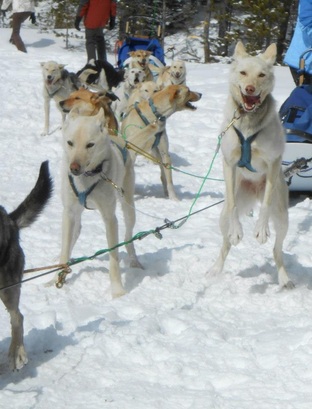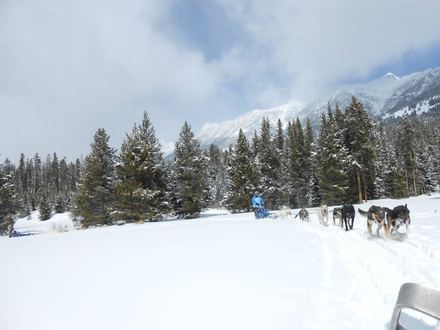Then a call comes in from the Iditarod that will push them to their limits. Kirra’s uncle, a musher in the race, has disappeared. Kirra and Reef quickly track the man, but what they discover is harrowing. Frank’s daughter has been kidnapped. In order to save her, the man must use his knowledge as a mechanical engineer to do the kidnapper’s bidding or she will die.
Kirra and Reef, along with the entire McKenna family, are thrown into a race to stop a shadowy villain who is not only threatening a girl’s life, but appears willing to unleash one of the largest disasters Alaska has ever seen.
| . | Dani Pettrey is a wife, home-schooling mom, and the acclaimed author of the romantic suspense series Alaskan Courage, which includes her bestselling novels Submerged, Shattered, Stranded, Silenced, and her latest release,Sabotaged. She feels blessed to write inspirational romantic suspense because it incorporates so many things she loves–the thrill of adventure, nail biting suspense, the deepening of her characters’ faith, and plenty of romance. She and her husband reside in Maryland, where they enjoy time with their daughters, son-in-law, and super-adorable grandson. | . |
Armchair Mushing Adventure and Iditarod Fun Facts
| 1. The Iditarod is the longest dog sled race in the world. It starts on the first Saturday in March every year in Anchorage, Alaska and ends about 1,200 miles away in Nome. 2. Sled dogs are exceptional draft animals for several reasons: They are faster than horses, able to run at up to 12 mph for hundreds of miles and at over 20 mph for shorter periods; they can pull about twice as much weight as horses, pound for pound |
| 3. Every winter, race organizers host an auction where the top bidder wins the opportunity to ride on one of the dog sleds for the first 11 miles. 4. To compete in the Iditarod, a musher must complete three qualifying races. 5. Only northern dog breeds like Siberian huskies and Alaskan malamutes are allowed to race in the Iditarod. |
| 6. The first full-length race took place in 1973. Despite naysayers afraid of sending mushers into such wild territory, the race was successful, with 22 finishers. 7. In 1925, sled dog teams played a crucial role in averting a diphtheria outbreak on the verge of becoming an epidemic. The disease was spreading quickly across Nome, but the nearest serum was in Anchorage, nearly 1,200 miles away. With no pilots available to fly in the treacherous weather—the only one thought fit for the task was out of state at the moment—and seaports iced over, organizers set up a relay system of dog teams, wherein each village along the route offered its strongest dog team. The 20 volunteer mushers and their dogs transported the serum to Nome in less than six days—enough time to prevent the epidemic, saving hundreds of lives. A statue of Balto, the dog that carried the serum at the end of the chain, stands in Central Park in New York City. |
| 8. The starting line can change. Unseasonably warm weather can move the starting line of the Iditarod race—known as the restart location—if the trail begins to melt. In 2003 and now in 2015 the restart has been moved to Fairbanks. 9. The teams average 16 dogs, which means over 1,000 dogs leave Anchorage for Nome. |
| 13. Lance Mackey is the only person to have 4 consecutive wins, 2007, 2008, 2009, 2010. He is also the first person to win the Yukon Quest 1,000 mile race and the Iditarod in the same year, 2007 and again in 2008. 14. The oldest winner was Mitch Seavey in 2013 at age 53. The youngest winner was Dallas Seavey in 2012 at age 25. 15. The first woman to win the Iditarod was Libby Riddles in 1985. |
| 16.The closest finish: 1978, when the nose of Dick Mackey’s lead dog crossed one second before Rick Swenson’s 17. A red lantern is awarded to the last musher to finish Iditarod. The longest time for a Red Lantern was 32 days, 15 hours, nine minutes and one second by John Schultz in 1973. The quickest Red Lantern musher Celeste Davis with a time of 13d 05h 06m 40s. |
He is a gorgeous red Alaskan Malamute and he loves to pull small sleds here at home.























 RSS Feed
RSS Feed













































































































